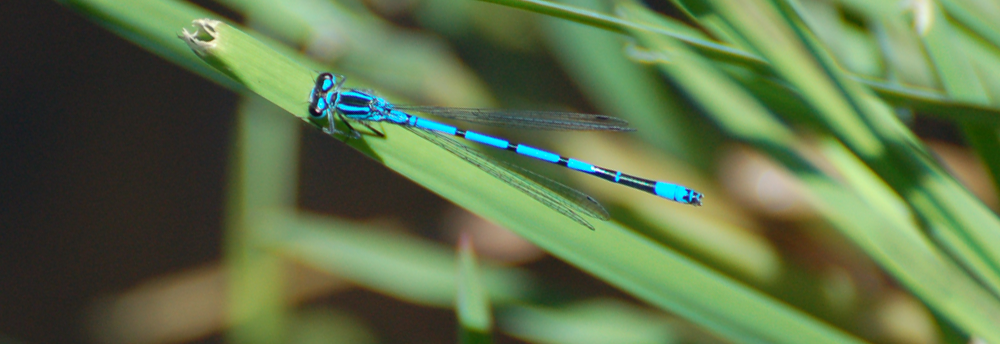About ten years ago I felt drawn to dragonflies and their symbolism. I began studying these fascinating creatures and developed an understanding of the dragonfly as a totem.
The dragonfly spends a majority of its life, around three years, as a nymph under water. For only a few months at the end of it’s life is it the aerial acrobat that we often admire. Throughout its underwater development, the premature dragonfly will molt about 13 times before emerging as an adult. Another interesting aspect of the nymph is how it consumes information. Although eyesight is one of the mature dragonfly’s most prominent assets, the nymph senses mainly through touch.
As a spiritual totem, the dragonfly’s underwater development is representative of the predominantly emotive early stages of human life. An individual drawn to this totem is most likely very emotionally sensitive early in life. The air-bound phase of the adult dragonfly, on the other hand, represents intellectual mastery. This represents our development from primarily emotional terms into more discerning, rational beings. As adults, dragonflies continue to live near bodies of water, such as ponds, lakes, and streams. This reminds us that although rationalization skills denote maturity, we are primarily emotive beings and true intelligence is found in a balanced interaction of experiential knowledge and cognitive maturity.
Dragonflies do not have lungs. They have long tubular bodies where oxygen can reach organs quickly. As a result, their bodies are light and efficient for aerial maneuvering. The dragonfly is swift and agile. Its four wings move independently, allowing them to hover or fly in any direction, including backward. They are quick and have stamina, flying up to 16 hours straight. Another remarkable characteristic of the adult dragonfly is its eyesight. Dragonflies are highly sensitive to color and movement. Their large eyes, having thousands of lenses, afford them nearly 360-degree vision.
The dragonfly’s wings are delicate and its body is fragile. Its strengths, agility and awareness, denote a sense of command as opposed to force. To avoid predators and capture prey it relies on its ability to sense discrete movements and its exceptional flying ability. In this way, dragonflies remind us to embrace change and develop awareness. They remind us that there is power in flexibility, perseverance and delicacy.
Another unique characteristic of the dragonfly is its coloration. Adult dragonflies come in a myriad of colors and often display multiple colors at once. Its coloration is not derived from pigment. It is the structure of its surface reflecting light of different wavelengths that produces its multitude of colors. This process, called interference, produces colors that are often bright, iridescent or metallic.
Dragonfly coloration is reminiscent of our light essence and the existence of our own unique characteristics, gifts and purpose. The reflective qualities of the dragonfly can be equated to how people reflect back to us what we emit, which colors our life experience. It is how we learn about ourselves and is an integral part of human experience and growth, prompting us to act in the spirit of unity, honesty and integrity. The subtle frequencies we use to communicate and heal at a deep level are also manifest in light’s spectrum of colors, seen and unseen. The spirit of the dragonfly helps us remember our divine origin and inspires us to effect positive change in our environment.
So if you are drawn to the dragonfly symbol, embrace your sensitive nature. Remember to balance that with discernment and awareness. Also, know that you are in command of your life, capable of dealing with whatever life presents to you.




